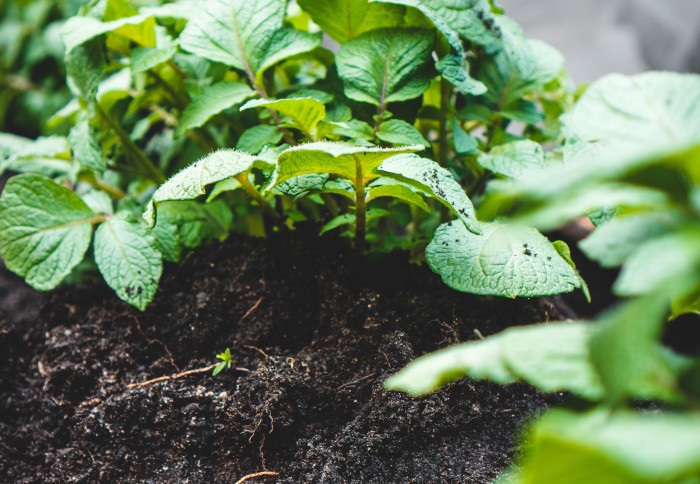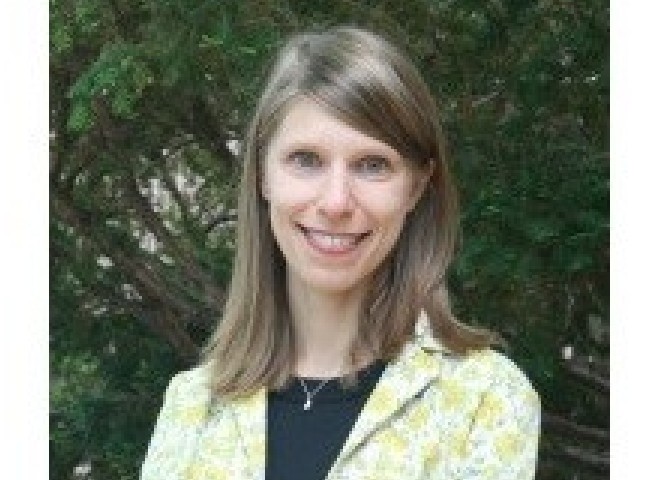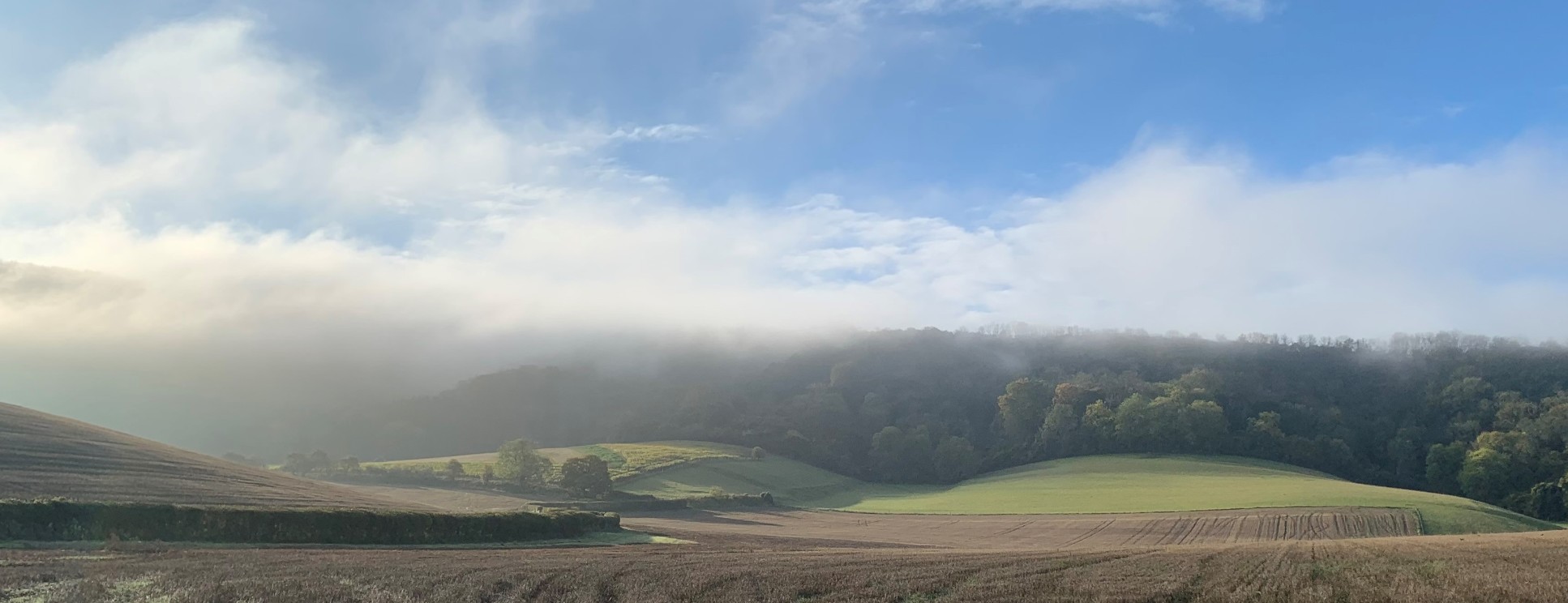Donation enables new PhD project into how soil can help us tackle climate change

You might wonder what soil has got to do with climate change and carbon dioxide emissions... quite a lot as it turns out.

One person who can tell us more about this is Dr Bonnie Waring, whose research focuses on terrestrial carbon sequestration – the process whereby carbon dioxide (CO2) in the atmosphere is removed by photosynthesis in plants, and subsequently transferred to the soil.
A recent generous donation, from Imperial alumnus Charles Rolls (Mining Engineering, 1979) to Imperial’s Department of Life Sciences, will fund a PhD project into biodiversity, soil health and ecosystem carbon sequestration, with particular focus on how changes in land management might help us in our fight against rising CO2 levels and climate change.
The donation is particularly special because it not only provides the finance to fund the research and support a talented student’s PhD scholarship, but also a unique opportunity for it to take place on a rural estate in the South of the UK. We caught up with Dr Waring to find out more.
Hi Bonnie! Tell us more about terrestrial carbon sequestration – why is it important?
Climate change is caused by an imbalance in the carbon cycle – there's too much carbon in the atmosphere in the form of carbon dioxide and that warms up our planet and causes all the many negative consequences of climate change. To understand how far and how fast climate change will progress, we need to understand the other places on our planet where carbon can reside and how it moves between the atmosphere and land.
The more that we can transfer carbon dioxide out of the atmosphere and into its land reservoirs, via the bodies of plants and animals and the soil, the slower the pace of climate change. There are many natural processes that pull carbon dioxide out of the atmosphere and store it away on land for periods of time that can range from a couple of months to millennia, and we’re seeking a better understanding of those processes so that we can predict how climate change in the future will alter that balance between carbon release to the atmosphere in the form of CO2 emission, and carbon uptake on land.
What do you find most fascinating about the Earth’s carbon cycle?
The thing that’s simultaneously fascinating, terrifying and exhilarating is how much there still is to discover about the processes that regulate particularly the terrestrial or land-based portion of the carbon cycle. In some years, a particular land ecosystem might be a net absorber of carbon dioxide from the atmosphere, whereas in other years that ecosystem might release CO2. There’s an inherent complexity there – we still have a lot of discoveries to make about the ecology of the organisms that are responsible for those CO2 exchanges.
When people ask why I study the carbon cycle, part of it is fundamental understanding – the bedrock on which management and policy are laid. Once we understand more about the fundamental ecological controls of carbon sequestration on land we can potentially start to manage it, and that’s where so-called nature-based solutions to climate change come in. How can we protect or modify or manage natural ecosystems in ways that enhance carbon dioxide uptake and minimise carbon dioxide release? At that point we could not only predict the trajectory of climate change, but hopefully actively modify it to slow it down.
You’ve travelled all over the world to study the soil carbon cycle. Why is it important that the research has this international scale?
The net uptake or release of carbon dioxide by land ecosystems in a given year is the sum of processes occurring in many individual ecosystems across the planet – two different ecosystems can respond in quite divergent ways to the same type of event, like a drought for instance. What’s normal for two different ecosystems can diverge wildly. I worked in a tropical wet forest where it’s normal to receive about four metres of rain a year. Obviously that amount of rain falling in a temperate woodland in the UK would be catastrophic, so there is some degree to which there aren’t many generalisable rules about how ecosystems respond to climate change. It involves some element of understanding the particularities of a particular ecosystem.
I think what I’ve found so fascinating in my research is trying to find the balance between the specific particularities of a given ecosystem and how that changes over time, and the general rules about ecosystems and their climate change responses that we can derive by comparing many different systems all over the world.
What three things would you like people to know about soil?
Even though it’s beneath everybody’s feet and we don’t think about it too much, I think that soil is one of the last great undiscovered frontiers. Dr Bonnie Waring Senior Lecturer, Grantham Institute
Let’s see... how can I pick just three?! Ok, so first is the fact that soils contain more carbon than all the plants on land and the atmosphere put together. They’re really a hot spot of carbon sequestration on land. Second, soils are probably the most biodiverse habitat on Earth – a single teaspoon typically contains about a thousand different species of bacteria and several hundred species of fungi, which is really amazing! And soils are also some of the most chemically complex substances on Earth, a mixture of minerals and organic matter in various states of decomposition. Even though soils have been intensively studied for centuries now, because they’re so critical for agriculture, we’re still struggling to characterise accurately their spatial structures and chemical compositions.
Even though it’s beneath everybody’s feet and we don’t think about it too much, I think that soil is one of the last great undiscovered frontiers.
Wow, soil sounds amazing...
Yeah it’s the biggest single reservoir of carbon on land, constantly releasing carbon dioxide through the activity of decomposer microorganisms and stabilising carbon as new soil organic matter is formed from dead plant and animal bodies. The balance between these two processes can be affected by things like changes in warming, rainfall and land use. Because there is so much carbon in soil even really minor changes in that balance can have big absolute implications for whether carbon dioxide is drawn out of the atmosphere or added to it.
Also, huge amounts of soil carbon are under direct human management - nearly half our planet’s habitable surface is devoted to agriculture. Agricultural soils are intensively managed to improve crop performance - we water, fertilise and irrigate them to make the plants grow bigger - so there’s the possibility that we could start managing soils in agricultural systems to sequester more carbon.

Charles Rolls’ donation has enabled this new PhD project. What is its focus?
This project looks at soils in rural UK landscapes, which are under a lot of different demands. Agricultural land supports pasture used for meat production. We have woodlands that we want to expand to help capture carbon, so they’ve become an increasing focus for policymakers. We have natural grasslands that are homes to important biodiversity. So all these different demands are being made on UK soils. The fundamental question we’ll be asking is what are the consequences of these different types of management on how much carbon is held within each context?
How will you gather the data that you need?
We have a really unique opportunity with this programme to work on a private estate that’s a kind of exemplar of the many different types of land uses that can be found across English landscapes. We'll do the very first carbon inventory of this landscape, which means measuring the plants so we can determine how much carbon is held within the plant biomass, and taking samples of soil that we can chemically analyse in the lab to determine their carbon content. With intensive measurements we can build up a map of how much carbon is held on the landscape. After that, in partnership with some of the land managers, we can start tweaking common practices that they have – like the intensity of grazing, the sheep and cattle they have on the land, the way that soils are prepared for planting and agricultural context – and by repeating those carbon measurements later on we can see if we have caused carbon loss or gain.
We’ll be able to observe many interesting aspects of the carbon cycle during this three- to four-year project, but we also want to return five, ten, twenty years later to see how some of the practices that we put in place today impact carbon sequestration over the long term.
How do you relate what’s going on above ground to what’s going on below ground?
What happens in the soil can never be separated from what happens in the plant community because plants are the biggest source of carbon inputs to the soil, and through interactions between the microbes that live in the soil and the microbes that live in the roots of plants, they also influence how much carbon is lost from the soil.
I'm also currently working on a research project with colleagues back in the States about how animals, by grazing on plants, subsequently effect what happens to the microbes that respond to those plant roots below ground. There’s an increasing recognition of the fact that soils are embedded in a broader food web. Even though the vast majority of the carbon physically sits in the bodies of either plants or the soil, and animals are a very minor pool of carbon in the ecosystem, animals can have disproportionate impacts on how carbon moves between plants and soils and the atmosphere. One of the great advantages to working at an estate like Charles’, where we have a great relationship with the landowner and they are really eager to see lots of ecological insight come out of the project, is that we can develop this platform that other researchers can also use and contribute to, to understand some of these other linkages.
Charles Rolls is providing not only the financial funding for the PhD position, but also the physical environment on which you can undertake the research?
Yes, it’s truly amazing, firstly because finding appropriate sites to do research can take a lot of time and effort, and there are few sites that present the number of different interesting environmental contrasts that Charles’ land does. On top of that we have the capacity to work with the actual farm managers to implement ecological experiments, and we know that we’ll be able to return to the same site repeatedly for a long period of time. Add all those ingredients together and you see what a rare opportunity this is in ecology. Many of our most fundamental insights have come from similar set-ups, where there’s a well-situated piece of land that offers a great perspective on all sorts of ecosystem processes that people are able to return to again and again.
How is the project set to compliment and enhance the UK’s Environmental Land Management scheme?
The UK government’s new Environmental Land Management scheme is being rolled out to compensate landowners for how they manage their land and how they use it to contribute to the UK’s broader environmental goals – not only carbon sequestration but also the protection of biodiversity and other ecosystem services. There are many demands made on any parcel of land, so in an agricultural context that land not only needs to produce food, but also pollinator diversity for example, and we want to maximise the amount of carbon held in those agricultural soils. That's a lot for a landowner to live up to, so for the government to have the proper incentive scheme, and to set the proper guidance that land managers can follow to achieve these goals, we need very solid and robust data to tell us if interventions in this type of system will enhance carbon sequestration effectively or not. We need the data to set up the proper incentive structures so that we’re not incentivising the wrong thing.
Your science is situated in an interesting place between the quite different contexts of academia, land ownership and management, and policymaking - was this a conscious decision?
I would say that I’m always refining my approach towards research so that the data that we collect can be more directly translated into useful outcomes, whether that’s informing a particular policy or providing public awareness on an issue. It’s something that I’m very intentionally directing my research programme to address. I moved from America a year ago so I'm pretty new to the UK community – obviously when you come to a new country the policy landscape is different, so I'm still in a phase of trying to learn more about how the research done in my lab can be of best use, but it’s certainly something that guides our decisions all the time.
Thanks Bonnie!
Find out more about The Waring Ecology Lab and explore related PhD opportunities at Imperial:
Article text (excluding photos or graphics) © Imperial College London.
Photos and graphics subject to third party copyright used with permission or © Imperial College London.
Reporter
Claudia Cannon
The Grantham Institute for Climate Change